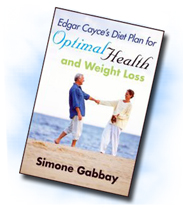SOY DANGER
Exposing a Pseudo Health Food
By Simone Gabbay , RNCP
|
|
During the past decade, aggressive advertising and marketing campaigns by soy processors and trade associations have established soy as a mainstream health food of universal appeal. But make no mistake-when you reach for the "soy" version of a traditional food, whether it be milk, cheese, or a burger, you are not choosing a healthier product. Processed soy foods such as soy milk, soy cheese, or textured vegetable protein (TVP) are not natural whole foods; they are insidious nutrient robbers disguised as miracle foods.
Soybeans contain high levels of phytic acid, which blocks the absorption of essential minerals such as calcium, magnesium, copper, iron, and zinc. Certain enzyme inhibitors in soy also interfere with protein digestion. Ironically, the soybean is reputed for its high protein content, and soy products such as tofu are widely used in vegetarian cuisine as substitutes for protein-rich meat and dairy.
Phytoestrogens found in soy act as endocrine disruptors and potent antithyroid agents that have been shown to promote hypothyroidism and other types of glandular disorders. They have been linked to infertility and breast cancer.
In traditionally fermented soy products such as tempeh, miso, or natto, the fermentation process helps to deactivate these enzyme inhibitors as well as neutralize phytic acid. Tofu, along with another longtime favourite of the health food industry, soy milk, do not share this benefit. High-heat processing required for soy milk production further denatures the proteins. The value of soy milk as an alternative for cow's milk is therefore questionable, especially since allergies to soy are as common as those to dairy.
Soy-based infant formulas, too, are a poor substitute for mother's milk. Blocking the absorption of minerals, and lacking the cholesterol which naturally occurs in breast milk, soy formulas put infants at risk for a deficiency of minerals, especially calcium and zinc, and deprive them of a substance which is vital for normal growth and development, particularly of the brain and nervous system. Pediatric associations around the world today are strongly advocating that soy formulas not be used as the primary source of nutrition for infants.
An additional drawback of soy-based foods is that the bulk of soy crops grown in North America is genetically modified, and the safety of GMO foods is highly questionable.
With such dubious credentials, how could the soybean ever have gone on record as a health food? Perhaps we have misinterpreted its versatility. Tofu, for instance, is traditionally consumed in small amounts in the Oriental diet. It might be served as a condiment in soups, or together with a variety of vegetables, rice, and meat or fish. It is not relied on as the meal's main source of protein, vitamins, and minerals. Could we have been overly enthusiastic in our eagerness to create new soy-based "health" foods such as tofu hot-dogs, tofurkey (faux turkey), soy cheese, and ice cream? Did we simply expect too much from this humble bean?
We also need to remember that soybeans belong in the family of legumes or pulses, or, as the Cayce readings often put it, the "pod" family. The readings consistently advised that these foods, though highly nourishing, should be consumed in small quantities. Cayce's rule of thumb was an average of two or three leafy vegetables for each one from the pod family. Soy products, and even soy milk, were recommended in some readings, but usually with a caveat: they were said to be beneficial only for physically active individuals. Pod vegetables are acid-forming, and Cayce also suggested that those who expended more energy on physical activity could afford to have a slightly higher amount of acid-forming foods in their diet.
Was Cayce aware of the soybean's high phytate content and its enzyme inhibitors? Perhaps so, but within the limited scope in which the readings recommended soy foods, these may not have been significant. Interestingly, many of the nutrients commonly found in foods continuously compete with each other for absorption. Zinc, for example, is an important mineral which must be supplied in the diet. In excessive amounts, however, it interferes with the absorption of copper, which, in turn, is required for the utilization of iron in the body. High levels of phosphorus consumed by eating a meat-based diet interfere with calcium absorption, as does oxalic acid found in spinach, rhubarb, and Swiss chard. What this shows is that the soybean is not the only food containing substances which block the uptake of other nutrients.
Eating a variety of different foods each day, including a wide selection of fresh vegetables and fruits, is the best way to ensure that all nutrients are supplied in balance. When given a choice between a tofu burger and a Big Mac, I'll still opt for the tofu burger. But I'll drink water rather than soy milk, and I'll pass on the tofu cheesecake for dessert.
For additional information on soy risks, check out the "soy alert" on the website of the Weston A. Price Foundation: http://www.westonaprice.org/soy/index.html.
Simone Gabbay, RNCP, is a holistic nutritionist, author, and editor in Toronto, Canada. Her most recent book is Edgar Cayce's Diet Plan for Optimal Health and Weight Loss, published by A.R.E. Press
in March 2008. www.edgarcaycediet.com
Copyright © Simone Gabbay 2008
|
|

